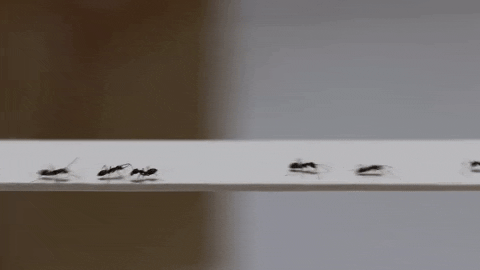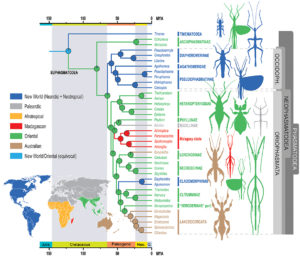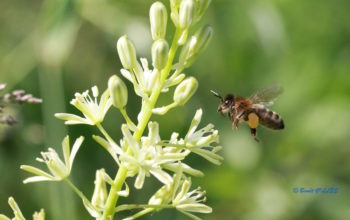The international team led by the Swiss Professor Peter Nagel and the doctoral student Thomas Hertach have just published in the journal “Zoological Journal of the Linnean Society” a new classification of the mountain cicadas of Switzerland and Italy. Previously, all cicada populations in these regions were grouped into a single species Cicadetta montana (Scopoli, 1772). However, morphological, acoustic and genetic studies have revealed the existence of a new species: Cicadetta sibillae, which is part of a complex of 10 species from a single ancestral Pleistocene species.
caption id=”attachment_1764″ align=”alignright” width=”300″] Figure 1 : Cross section of the thorax of a cicada : description of the timbales (Source : Encyclopedia of Insects – 2009 – Modified by B. GILLES)[/caption]
Figure 1 : Cross section of the thorax of a cicada : description of the timbales (Source : Encyclopedia of Insects – 2009 – Modified by B. GILLES)[/caption]
The cicadidae (Hemiptera) are insects with few morphological variations, the distinction between the different species is essentially based on the nature of their song. The male of each species emits a specific sound in rhythm, frequency and intensity that allows them to attract the right sexual partner. Sound is produced by the contraction of thoracic muscles making an organ vibrate: the timbal (see figure 1 and video at the bottom of the page).
The scientists of this study, the Swiss Peter Nagel of the University of Basel in Switzerland, the doctoral student Thomas Hertach and their colleagues from Slovenia and the United States, have therefore undertaken to characterize seven different populations of Switzerland and Italy on morphological, acoustic and genetic criteria. Their results indicate that there is not a single species Cicada montana (Scopoli, 1772), but a whole complex of species very phylogenetically related.
caption id=”attachment_1945″ align=”alignleft” width=”331″] Photo 1 : Cicadetta sibillae (Source : Thomas Hertach)[/caption]
Photo 1 : Cicadetta sibillae (Source : Thomas Hertach)[/caption]
Apart, groups of species emit relatively distinct sounds, in others, they are particularly similar as for Cicadetta cerdaniensis (Powerful & Boulard, 2000), Cicadetta cantilatrix (Sweat & Powerful, 2007) and Cicadetta anapaistica (Hertach, 2011).
Their work has also described a new species: Cicadetta sibillae (see photo 1 opposite), and a new subspecies: Cicadetta anapaistica lucana ssp. Cicadetta sibillae is present in southern Switzerland and central Italy and appears to be the most abundant species, while the range of the subspecies Cicadetta anapaistica lucana ssp. is severely restricted, making it vulnerable and threatened by habitat fragmentation.
This study also provides a better understanding of the evolutionary history of these species in these regions. During the last ice age (Pleistocene), 1 million years ago, an ancestral species would have found refuge in the Italian regions, as well as in the Iberian and Balkan regions, with a milder climate and then diversified into several species. As these speciation processes are recent, morphological and acoustic variations between species are still not very noticeable.
Source : Hertach T. ; Trilar T. ; Wade E.J. ; Simon C. ; Nagel P. (2015) : Songs, genetics, and morphology: revealing the taxonomic units in the European Cicadetta cerdaniensis cicada group, with a description of new taxa (Hemiptera : Cicadidae). Zoological Journal of the Linnean Society, 173 (2): 320 (lien)
Video showing a cicada timbale in slow motion :
If the video does not work, click on this link





